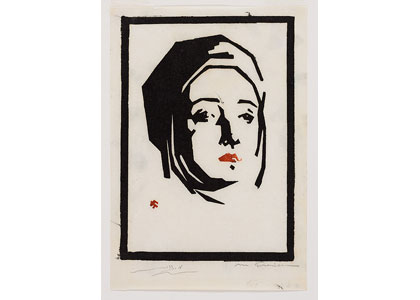Shadowscapes Meir Gur-Arieh
Curator: Sigal Kehat Krinski
15/09/2016 -
11/03/2017

“Shadow is a reality to your consciousness, equal to that of light”
– Henri Bergson
Shadowscapes is one of the few exhibitions ever dedicated to the works of the important Bezalel artist Meir Gur Arieh (1891-1951). Gur Arieh engaged in a variety of arts like painting, ivory carving, and stone carving. The exhibition of works from the collection of Petach Tikva Museum of Art and other private collections wishes to explore his extensive oeuvre and delve into his artistic innovations. Gur Arieh’s body of work oscillated between “pure” art, which denies any possible affinity to the functional, and a practice that serves non-artistic themes, has a functional orientation, and is realized in crafts such as designing postcards, posters, or Hebrew letters.
Gur Arieh’s unique language was manifested mainly in his use of silhouettes, a European artistic medium which the Russian-born artist adopted in Israel, inspired by books and magazines found in the library of Bezalel National Museum. The choice in the simplicity and lucidity of the traditional paper-cut art yielded dozens of black and white works, and allowed Gur Arieh to create a rich typology of people and their different occupations in Pre-State Israel at the dawn of the 20th century. His works contain narrative sequences that touch on life and the human landscapes of this country. This connects Gur Arieh to the generation of artists who strove to construct a national identity, while the figure of the pioneer serves as the main image in shaping the portrait of the “new Jew” who works the land and awakens to a new life.
Gur Arieh had an impressive talent for realistic representation and his masterful technical skill was expressed in his ability to breathe live and internalize movement in the represented scenes. These positive-negative relations between figure and background are among his outstanding qualities. This formal combination was unique to him, and he was only one out of Bezalel artists to turn to this mode of expression that became synonymous with him, and with that left his mark on the local visual folklore.


